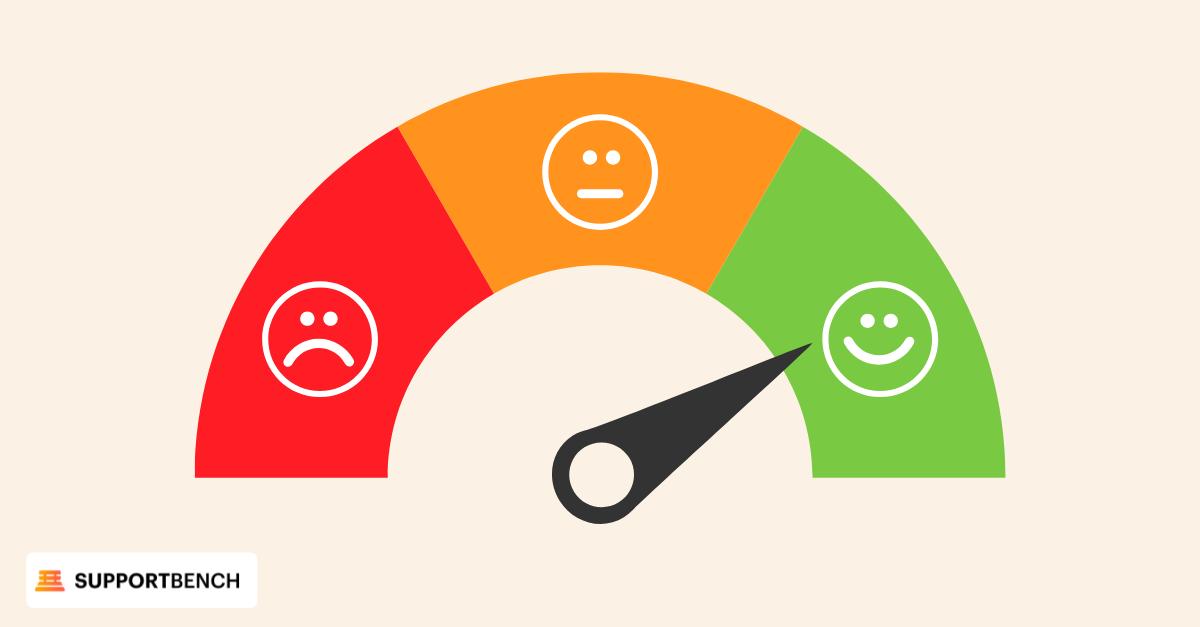In today’s competitive business landscape, customer retention and satisfaction are critical to success. A Customer Health Score (CHS) evaluates customer engagement and predicts churn by analyzing product usage, feedback, and support interactions.
This guide explores how CHS helps businesses reduce churn, strengthen relationships, and drive long-term growth. Business owners and customer success managers will learn how to leverage CHS to enhance retention and satisfaction effectively.
Let’s explore how this tool can improve customer success strategies.

Definition of CHS: What It Is and Its Purpose in Business
A CHS is a metric that evaluates the overall health of a customer relationship by analyzing key data points such as product usage, customer feedback, and support interactions. It provides a measurable indicator of customer engagement and satisfaction.
By consolidating these metrics into a single score, businesses gain a clear view of customer status—identifying those who are engaged, satisfied, or at risk of churn. This allows companies to proactively address issues, strengthen relationships, and enhance customer retention.
As a real-time snapshot of customer engagement, a CHS helps businesses monitor interactions and prioritize efforts to improve long-term customer satisfaction and loyalty.
Why is the CHS important for businesses?
CHS is more than just a metric—it is a powerful tool for driving business success. By tracking key indicators of customer engagement, CHS helps companies predict churn, identify upsell opportunities, and enhance customer satisfaction.
Predicting Churn
One of the most critical uses of a Customer Health Score is churn prediction. A declining CHS serves as an early warning sign, indicating potential customer disengagement.
By monitoring product usage, feedback, and support interactions, businesses can detect risk factors—such as decreased engagement or negative sentiment—before customers leave.
This proactive approach allows customer success teams to intervene early, addressing concerns and improving retention rates.
Identifying Upsell Opportunities
A high Customer Health Score signals strong engagement and satisfaction, making it easier to identify upsell opportunities. Satisfied customers are more likely to see additional value in expanded services or premium features.
By analyzing CHS data, businesses can personalize their offerings and strategically introduce new solutions to increase customer lifetime value.
Enhancing Customer Satisfaction
Tracking Customer Health Scores enables businesses to continuously refine their support strategies, product improvements, and customer engagement efforts.
By identifying areas for enhancement—such as improving response times, adding new features, or providing personalized service—companies can strengthen customer relationships and build long-term loyalty.
The Customer Health Score’s impact on customer retention is significant. By leveraging CHS insights, businesses can implement proactive strategies to retain customers, maximize revenue, and drive sustained growth.
Start optimizing your customer relationships today with Supportbench to drive retention and long-term success.
What metrics are included in a Customer Health Score?
A Customer Health Score (CHS) evaluates the health of customer relationships by analyzing key engagement and satisfaction indicators. These metrics provide businesses with a clear picture of customer interactions, helping them proactively manage relationships and improve retention.
Product Usage
The frequency and depth of product engagement are strong indicators of customer health. Regular usage often correlates with satisfaction and perceived value, while a decline in usage may signal disengagement.
Customer Feedback
Surveys, Net Promoter Scores (NPS), and direct comments offer valuable insights into customer experience. Positive feedback suggests a strong relationship, while negative feedback highlights areas that need improvement.
Support Interactions
The number and nature of support requests can reveal potential issues. Frequent complaints may indicate dissatisfaction, while quick resolutions and minimal support inquiries suggest a positive customer experience.
Customer Satisfaction
Measured through satisfaction surveys and post-interaction ratings, this metric directly reflects how customers feel about your product or service. High scores indicate strong engagement, while low scores may point to retention risks.
Account Growth
Upsells, renewals, and increased product usage are signs of a growing and satisfied customer relationship. A stagnant or declining account may suggest a need for re-engagement strategies.
Engagement with Communication
How customers interact with emails, product updates, and social media reflects their level of interest. Strong engagement indicates continued investment in your product, while lack of response may signal reduced involvement.
These key components form the foundation of a Customer Health Score, helping businesses track engagement, predict churn, and enhance customer relationships.
Start measuring customer health today with Supportbench to improve retention and optimize your customer success strategy.

Steps to Calculate a Customer Health Score
A Customer Health Score (CHS) quantifies customer engagement and satisfaction by translating key metrics into a numerical value. Below is a structured approach to computing the score:
1. Identify Key Metrics and Set Your Data Sources
Determine the most relevant metrics for your Customer Health Score, such as product usage, customer feedback, and satisfaction scores. Gather this data from sources like your CRM, ticketing system, and survey responses.
2. Assign Weights to Each Metric
Not all metrics carry equal importance. Assign weights based on their significance in assessing customer health. For example:
- Product Usage: 40%
- Customer Feedback: 30%
- Support Interactions: 20%
- Account Growth: 10%
Ensure the total weight adds up to 100%.
3. Define Scoring Ranges for Each Metric
Establish a scoring system for each metric. For instance:
- Product usage: Scale of 1 to 10 (10 = high engagement, 1 = low engagement)
- Customer feedback: Scale of 1 to 5 (5 = excellent feedback, 1 = negative feedback)
4. Calculate the Weighted Score for Each Metric
For each customer, assign a score to each metric and multiply it by its weight. Example:
- Product Usage: Score of 8/10, weighted at 40% → 8 × 0.40 = 3.2
- Customer Feedback: Score of 4/5, weighted at 30% → 4 × 0.30 = 1.2
- Support Interactions: Score of 3/5, weighted at 20% → 3 × 0.20 = 1.5
- Account Growth: Score of 4/5, weighted at 10% → 4 × 0.10 = 0.8
5. Sum the Weighted Scores
Add up all weighted scores to get the total CHS:
3.2 + 1.2 + 1.5 + 0.8 = 6.7
6. Establish Health Score Thresholds
Define thresholds to categorize customers based on their CHS:
- 8-10: Healthy (Highly engaged and satisfied)
- 5-7: At Risk (Requires attention or intervention)
- 0-4: Unhealthy (High risk of churn)
7. Review and Adjust Regularly
As customer behavior evolves, periodically reassess and refine your scoring model to ensure accuracy. Continuously tracking CHS helps businesses maintain long-term customer success.
By following these steps, companies can track satisfaction, identify at-risk customers, and proactively improve retention. This structured approach supports enhancing customer satisfaction and fostering long-term loyalty.
How to Integrate CHS into Your Business Strategy
Integrating CHS into your business strategy enhances customer relationship management by enabling proactive issue resolution and better resource allocation. Here’s how to incorporate CHS into daily operations and decision-making processes.
Align Customer Health Scores with Key Performance Indicators (KPIs)
Incorporate Customer Health Scores into your KPIs to track customer satisfaction goals effectively. Monitor customer health alongside response times, first-contact resolution rates, and service quality metrics to ensure that customer success efforts align with measurable outcomes.

Proactively Address At-Risk Customers
Use CHS as a key indicator for predicting customer churn. Identifying at-risk customers early allows businesses to take proactive steps—such as addressing concerns, offering tailored solutions, or reaching out with personalized support—reducing the likelihood of losing valuable customers and strengthening long-term relationships.
Prioritize Resources Based on Customer Health
Not all customers require the same level of attention. CHS helps businesses determine where to allocate resources:
- High-value customers with low scores may require a dedicated customer success manager.
- Customers with consistently high scores can be supported through automated tools or self-service options.
Incorporate Customer Health Insights in Product Development
Customer feedback and usage metrics within CHS provide valuable insights into product or service improvements. By integrating these insights into product development cycles, businesses can address customer concerns more effectively, enhancing satisfaction and reducing churn over time.
Drive Cross-Department Collaboration
CHS fosters collaboration between sales, marketing, and customer support teams:
- The sales team can focus on upselling high-health customers.
- Support teams can prioritize accounts with low health scores to prevent churn.
This alignment ensures a cohesive customer experience across departments.
Use CHS for Long-Term Strategy
Incorporating CHS into strategic planning helps guide customer success initiatives. Regular tracking of CHS provides insights into long-term customer trends, influencing product development, marketing efforts, and resource allocation.
By effectively integrating CHS, businesses can make data-driven decisions that strengthen customer relationships, reduce churn, and enhance overall retention.
Conclusion
Effectively managing customer relationships requires a clear understanding of customer health and proactive strategies.
Integrating Customer Health Scores into your business strategy helps predict churn, uncover upsell opportunities, and improve customer satisfaction. By leveraging customer support analytics tools, businesses can gain valuable insights and make data-driven decisions to strengthen customer retention.
Start optimizing your customer success strategy today. Request a demo and discover how Supportbench can help you enhance customer relationships and long-term growth.












